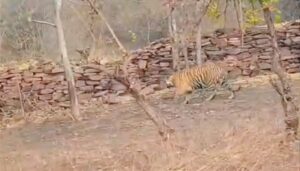
This is an AI-generated image for representation purposes.
Patna: As temperatures soar unusually high for April, Bihar is already grappling with an intensifying drinking water crisis. Long familiar with summer shortages, the state now faces an early onset of groundwater depletion, affecting not only access to potable water but also fruit cultivation in key rural regions.
According to field reports, groundwater levels have plummeted across several districts, including Patna, Gaya, Nawada, and Nalanda. In parts of rural Patna, the water table has dropped to between 32 and 39 feet. In the drought-prone villages of Imamganj, Dumariya, and Banke Bazaar in Gaya district, levels have sunk as deep as 80 feet, leaving most hand pumps dry and residents struggling to secure drinking water.
The scorching temperatures—reaching mid-summer highs well before May—are also taking a toll on horticulture. Farmers report significant damage to mango and litchi crops, with premature bud fall threatening yields. The situation is particularly acute in orchard-dominated areas, where rising mercury levels disrupt flowering and fruiting cycles.
In Bhojpur, groundwater has receded by six inches in just two months. Local water bodies, including rivers, ponds, and ahar-pyne systems, are beginning to dry up. The Son River, a vital source of water for adjacent villages, is also witnessing a visible decline, sparking alarm in riverbank communities.
Jehanabad district reports that groundwater levels in four panchayats have fallen below the warning threshold. Buxar is facing similar stress, with many urban hand pumps running dry. Nalanda’s Parwalpur, Ben, Islampur, and Ekangarsarai blocks are also in the red zone, with water tables falling to 50 feet or lower in 38 panchayats.
Kaimur district is seeing variable impact: groundwater has dropped by five to ten feet in hilly areas and by one to two feet in the plains. Meanwhile, Siwan remains relatively unaffected, though concerns are mounting as temperatures continue to rise.





